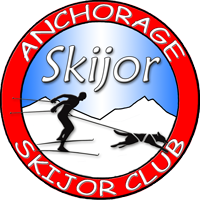Motivating your Pet Dog to Run Enthusiastically
Overweight?
Check your dog’s weight. You should easily be able to feel his last two ribs and his hip bones. So if he is overweight, keep your training sessions very short. Reduce his feed.
Confine
To build up interest in exercising, confine your dog in a crate or kennel a couple of hours before you train.
Limit the Number of Workouts
Do not train with your dog daily. Initially take him out about 4 times a week. Vary the trails. Train on flat trails at first, later with conditioning, include hills. Dogs love narrow trails and corners. It’s exciting for them to find what’s around the corner. (Hopefully, it’s not a moose.)
Short workouts
Keep your training session short at first. Always stop while the dog wants more. When he’s performed especially well, it’s a good idea to stop, even though you may have just started your training session. (You don’t want to do this every time, but the first time he does really well and shows a lot of enthusiasm, stop.) It is especially important not to go longer because he’s doing so well: you can increase your training time on your next outing.
Take care of Business
Before you train, get your dog to do his business and clean it up. Sometimes this takes a while, but it’s worth it for a clean and consistent run. Once he is harnessed and you’re ready to go, no more stopping to pee! In fact, no stopping period, no visiting (this is for the skier, too).
Loops are better
Dogs prefer to run on trails that make a loop, but these are very scarce in Anchorage. As you learn the trails you will discover some places where you can make a small turn-around without having to do an about- face. It is best not to let your dog stop and roll in the snow or pee at this point. Don’t stop in the same place each session, as your dog will soon refuse to go beyond that point.
Odors
Training on trails that have lots of smells helps keep the dog interested in going on down the trail. I have found Chester Creek very good for keeping dogs interested. There are lots of skiers, dogs are usually on leash as the roads are close by, and the trail is wide with plenty of room for passing. All of these obstacles smell and your dog is likely to want to “catch” what he smells. Hopefully, once you’ve “caught it” there’s another smell to catch.
Chase
Chasing another, faster dog is the ultimate motivator and if you can find one of these to train with occasionally it will help tremendously. You don’t want to do this every time, as you will find that your dog may not participate without a chase.
Race
Races are excellent motivators. Be sure the course is within your training parameters (similar distance and terrain). The Montana Creek skijor races are mostly flat and early season. The ASC races are generally later in the season and usually have hills. If you are training and not competing, ask to go out last at the sign up, or nearly last (depending on the no. of requests to go last) so that you’ll have plenty of dogs to catch
Be serious
If you want your dog to be serious about running, you must be serious about training him. Develop a plan and stick to it. Don’t just go out and skijor until he’s tired. Don’t take your dog out after a race for an afternoon tour. You are training him to give his “all” when he’s skijoring. Don’t ask too much or he won’t give you his “all”. This doesn’t mean that you can’t go on a longer tour. Dogs learn to sense when you’re out for a fun tour rather than training. Save your tours for special occasions and don’t tour on the same trails you use for training. However, when you do tour, you decide when to stop and rest, and make sure that you stop and rest before your dog is exhausted.
Lulie Williams
